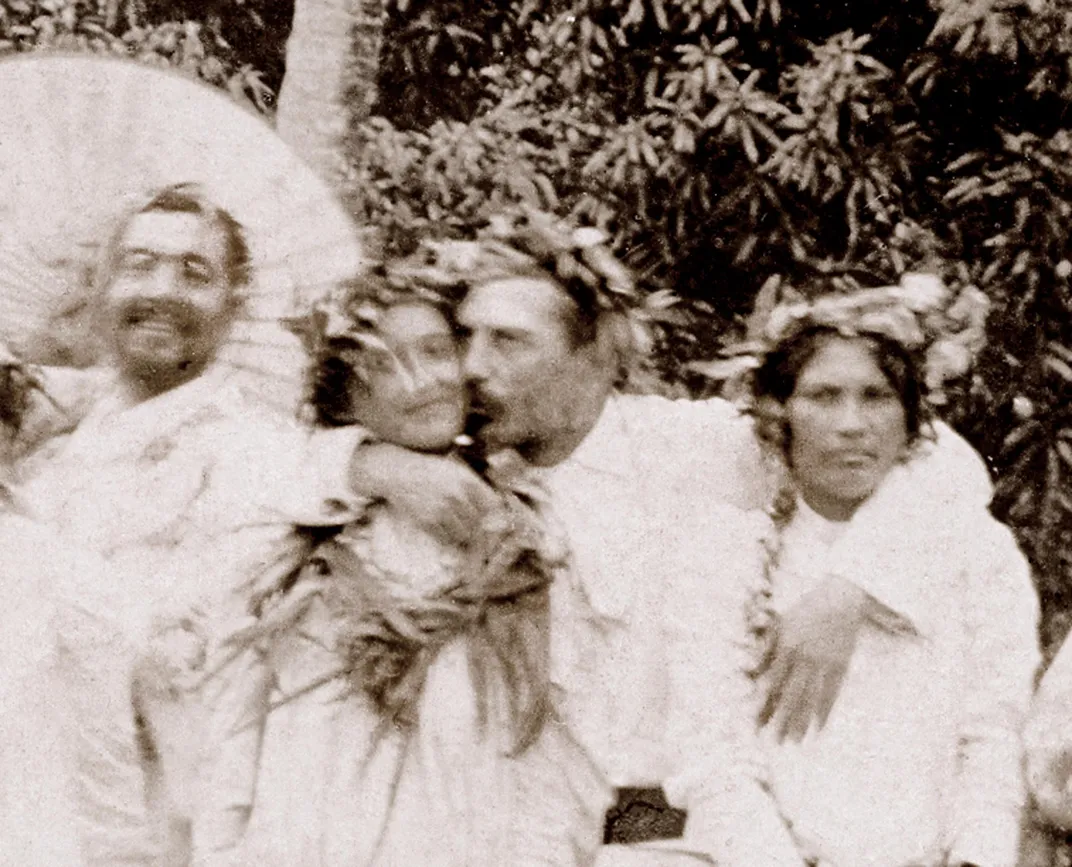Rare Photographs Could Show Paul Gauguin in Tahiti
The newly discovered photos are from the summer of 1896
Paul Gauguin's saturated colors and vivid depictions of an idealized island life in the Pacific Islands is a credit to the Post-Impressionist's genius, but also a window into Gauguin, the pedophile who infected a string of adolescent lovers as well as three child brides with syphilis during his time in Polynesia. Now The Art Newspaper’s Martin Bailey reports, two old, blurry photographs could show the painter with Pahura, one of his very young Tahitian wives.
The images were taken by Jules Agostini, a friend of Gauguin’s and a colonial administrator in French Polynesia, Bailey writes. Dated July 19, 1896, they appear to capture Gauguin with a French naval doctor named Joseph Gouzer and the young Tahitian woman believed to be Pahura. A Munich art dealer named Daniel Blau acquired them after purchasing one of two Agostini albums that were being auctioned off in 2015. Ten years earlier, Blau's wife, Maria, had made the connection between Gauguin and the man who appears in these group images after seeing a different photo album at auction that contained one of the same photographs, Scott Reyburn writes for the New York Times.
A Gauguin expert tells Bailey she is convinced that the photographs do show the painter. However, Christine Barthe, the head of the photographic collections at the Musée du Quai Branly, which acquired the second Agostini album auctioned in 2015, is more cautious. “Some people see Gauguin in the album, but we need more than wishes,” she tells Bailey.
The photographs could offer new insight into Gauguin's time in Tahiti. In his 40s, Gauguin abandoned his wife and five children to live in the Pacific Islands. From the start, he mythologized his new home as a "primitive paradise," the Musée d'Orsay notes. The artist infamously used adolescent women in Polynesia as his models and mistresses, and Pahura was barely a teen when they became romantically involved during Gaugin's second trip to Tahiti.
Despite already suffering from the syphilis that would kill him, Blau tells ArtNet’s Henri Neuendorf that Gauguin seems “an exuberant man in his best years” in the photographs. If they do capture Gauguin, then Reyburn writes the artist would have just left his stay in the hospital (where he was placed in a ward for indigents) when the pictures were taken.
/https://tf-cmsv2-smithsonianmag-media.s3.amazonaws.com/accounts/headshot/erin.png)


/https://tf-cmsv2-smithsonianmag-media.s3.amazonaws.com/accounts/headshot/erin.png)